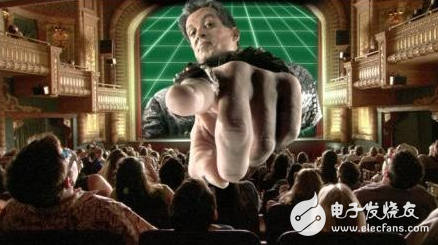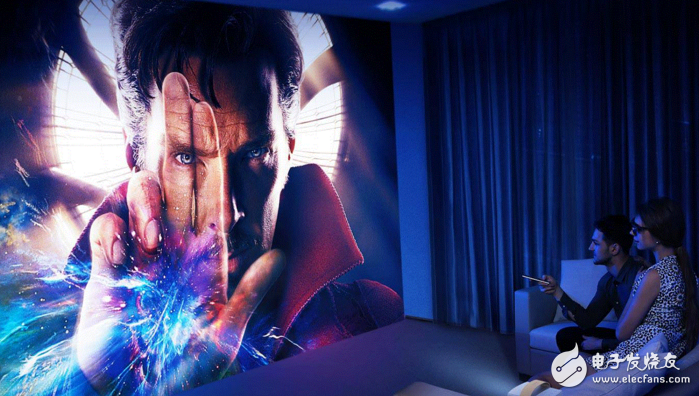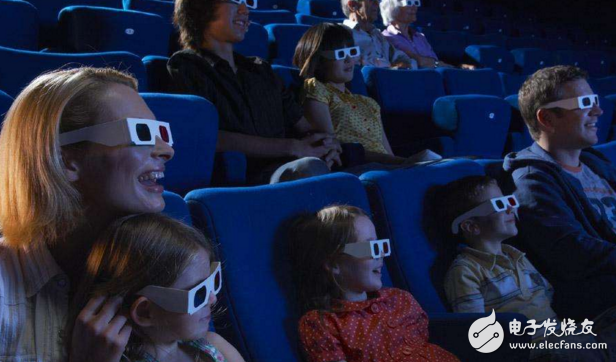3D movies generally refer to stereoscopic movies. The three-dimensional movie is also a movie. On May 24, 1953, a three-dimensional movie first appeared, and Hollywood launched a movie. The audience wearing special glasses, like watching the thrillers like "Bowana Devil" and "Walk House", found themselves hiding behind the escape train and the devil. This brings us into the era of stereoscopic movies. The principle of 3D movies ANAGLYPH: The two images are superimposed to produce a three-dimensional effect. When the audience wears stereo glasses, they have an immersive feeling. Also known as "3D stereoscopic movie." A stereoscopic movie is a movie that produces a stereoscopic effect by using the difference in viewing angle and convergence of the eyes of a person. Appeared in 1922. When the film is shown, the two images overlap on the screen. Through the audience's special glasses or the front-radial semi-conical lens grating, the viewer's left eye sees the picture taken from the left perspective, and the right eye sees the picture taken from the right. Through the convergence function of both eyes, it is synthesized into a stereoscopic image. There are many forms of 3D stereoscopic film production, and the polarized glasses method is widely used. It uses the method of observing the scene by the human eye, and uses two parallel movie cameras to represent the left and right eyes of the person, and simultaneously shoot two films with a slight parallax. During the screening, two movie films were loaded into the left and right film projectors, and two polarizers with polarization axes of 90 degrees were placed in front of the projection lens. The two projectors need to run synchronously, and the screen is placed on the metal screen to form a left-right image like a double shadow. When the audience wears special polarized glasses, the polarization axes of the left and right polarizers are perpendicular to each other and coincide with the polarization axis before the projection lens; so that the left eye of the viewer can only see the left and right eyes. The right image can be seen, and the left and right images are superimposed on the retina through the binocular convergence function, and the 3D stereoscopic visual effect is generated by the brain nerve. It displays a coherent three-dimensional picture, which makes the audience feel that the scene is coming in, or entering the deep recess of the screen, which can produce a strong sense of “immersivenessâ€. A stereoscopic movie is a two-viewpoint image of a scene with two lenses, such as a human eye. Then through two projectors, the images of the two viewpoints are simultaneously displayed, so that the two images with slightly different differences are displayed on the screen. If the eyes are directly viewed, the images seen are overlapped and some are blurred. To see the stereo image, take measures so that the left eye only sees the left image, and the right eye only sees the right image. For example, each polarizing film in the opposite direction is installed in front of each player, which acts as equivalent. The polarizer, after the light emitted from the projector passes through the polarizing plate, becomes polarized light, and the polarization directions of the polarizing plates in front of the left and right projectors are perpendicular to each other, and thus the polarization directions of the two polarized lights are also perpendicular to each other. The beam polarized light is projected onto the screen and then reflected to the viewer. The direction of the polarized light does not change. The viewer uses the polarized glasses corresponding to the polarized light to observe, that is, the left eye can only see the picture reflected by the left machine, and the right eye can only see it. To the right screen, you will see a stereoscopic scene, which is the principle of stereoscopic movies. Complementary colors, switches, lenticular mirrors, slit gratings, etc. are all different ways of viewing stereoscopic views on the basic principle of ensuring the left eye to the left and the right eye to the right. With the advancement of technology, people will see more stereoscopic methods on the screen. Polarized 3D Polarized 3D technology is also called polarized 3D. It is passively received and is often used in the polarized 3D technology of the projector industry. It requires two or more projectors with the same performance parameters to achieve 3D effects, while the polarized 3D technology used in the TV industry requires 240Hz or 480Hz. Refresh rate. This 3D technology has lower cost in terms of auxiliary equipment, but has higher requirements on output equipment. Shutter 3D technology Shutter-type 3D technology, the principle is based on the refresh time of the image frequency of the human eye, by increasing the fast refresh rate of the picture (at least 120Hz), the 60Hz fast refresh image of the left and right eyes will make people The image does not have a sense of jitter, and the same number of frames as the 2D video is maintained. The two eyes of the viewer see different images that are quickly switched, and an illusion is generated in the brain to view the stereoscopic image.
This is a special TOVAPO TP010-600 Vape Pen product series. We sell TP010-600 vape pen disposable,TP010-600 vape pen kit, TP010-600 vape pen disposable,TP010-600 vape pen kit,TP010-600 vape starter kit,400mah battery vape,400 mah vape disposable Ningbo Autrends International Trade Co.,Ltd. , https://www.supervapebar.com


TP010-600 vape starter kit, and other Tovapo vapes.
We are specialized electronic cigarette manufacturers from China, Vapes For Smoking, Vape Pen Kits suppliers/factory, wholesale high-quality
products of Modern E-Cigarette R & D and manufacturing, we have the perfect after-sales service and technical support. Look forward to
your cooperation!
What is the principle of 3d film?
What is a 3D movie?